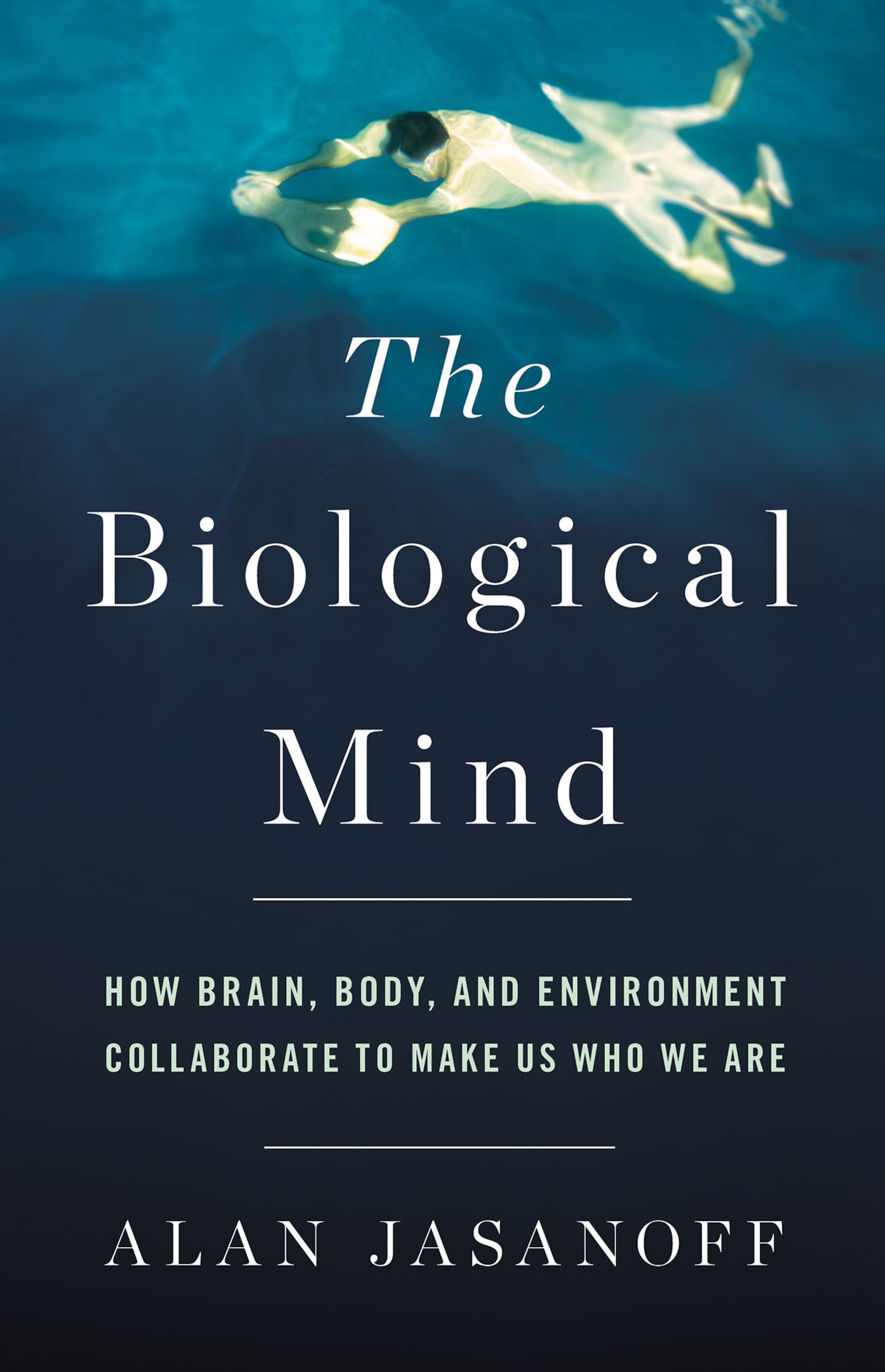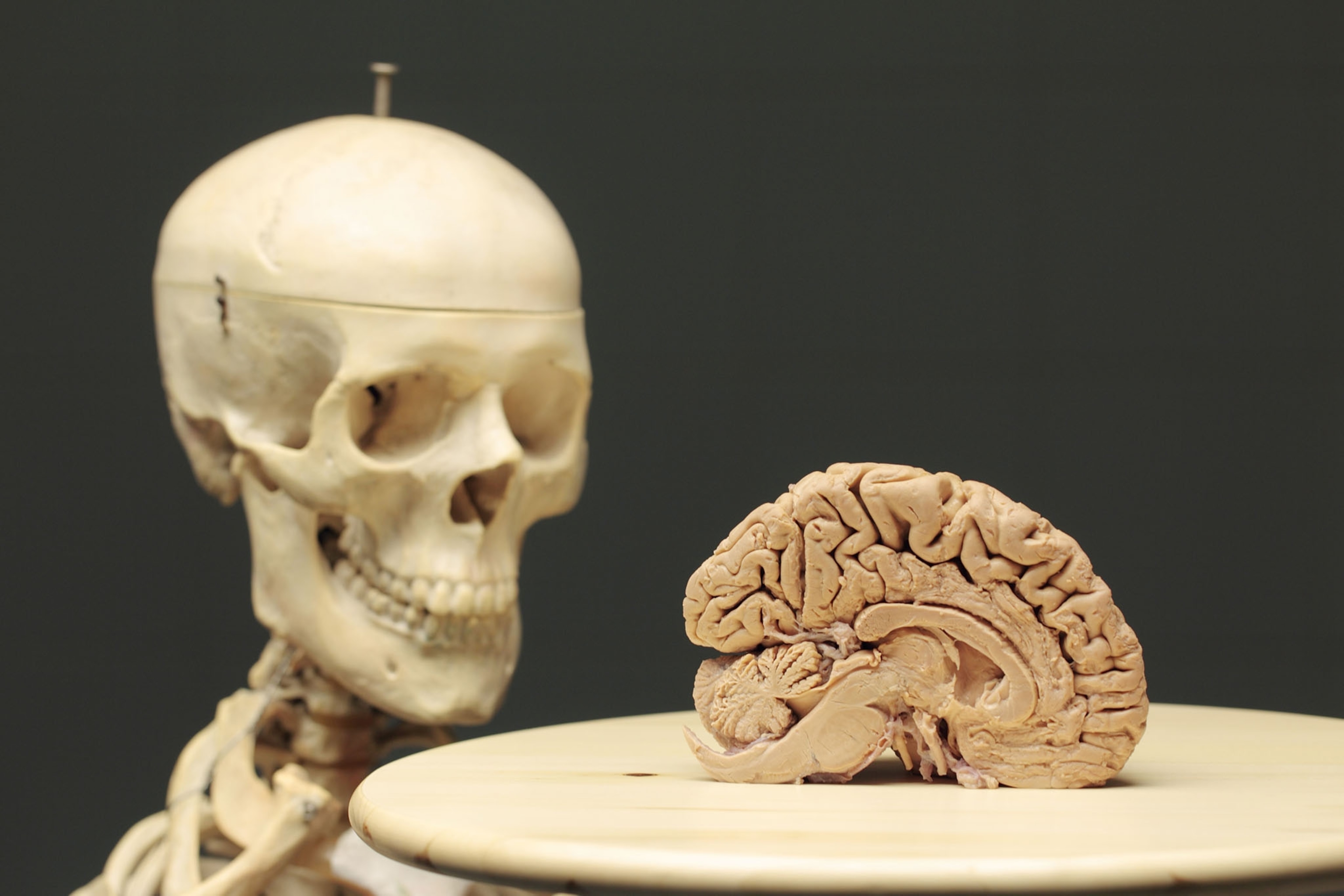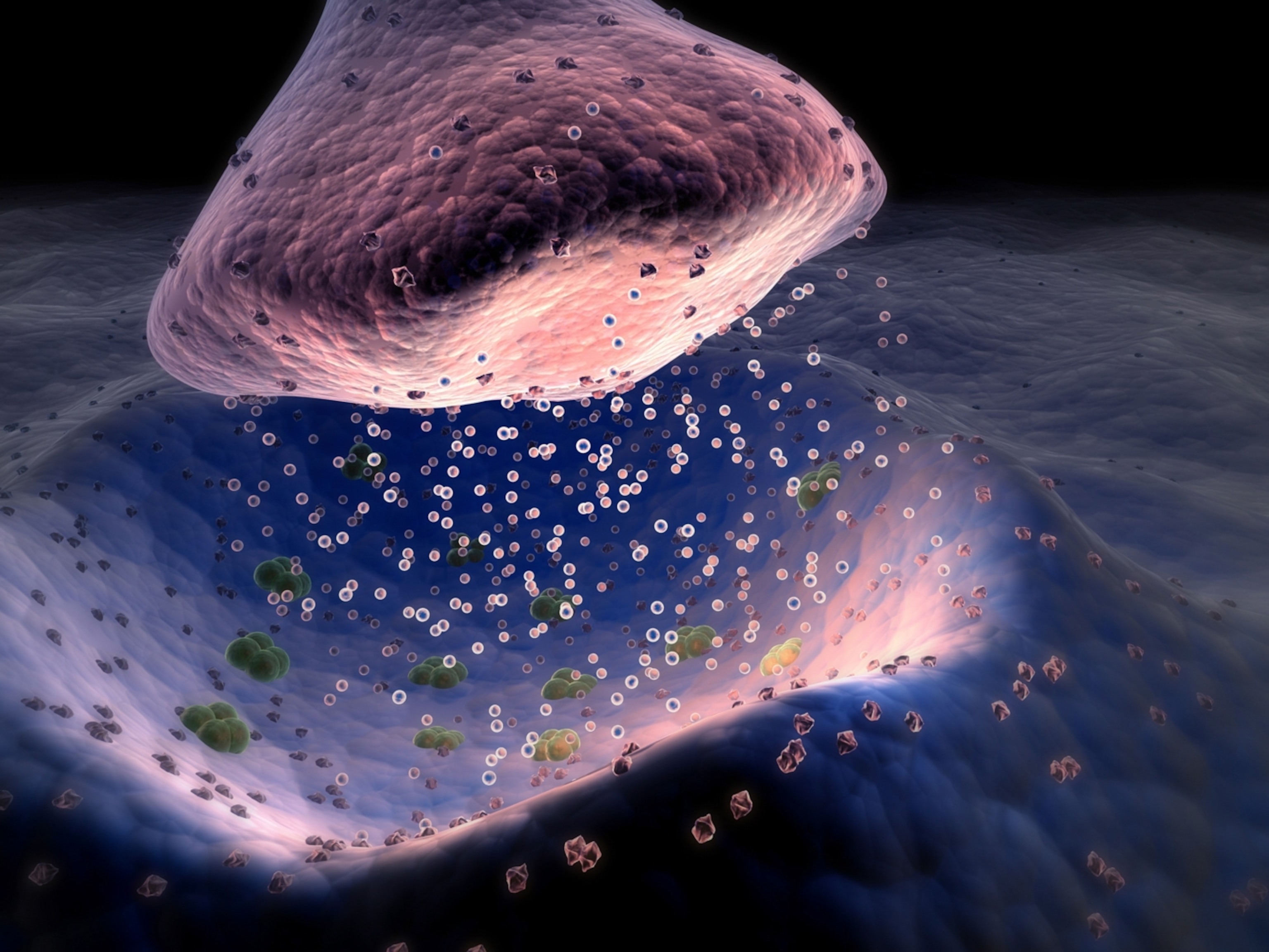Why the Brain-Body Connection Is More Important Than We Think
Our brains aren’t flying solo; our emotions also come into play when we’re interacting with the world, new research finds.
The idea that our brains are like giant supercomputers, orchestrating and determining everything we do, has gained ground in recent years. So too have ideas that a short time ago would have been regarded as science fiction, like downloading the Internet directly to our brains, or creating a new kind of human, one with enhanced cognitive powers.
In his new book, The Biological Mind, Alan Jasanoff, professor of biological engineering at MIT, explains why this “cerebral mystique” creates a false dichotomy between the brain and the body and ignores bodily influences on our psychology, from chemicals in the blood to bacteria in the gut.
Speaking from his office at MIT, he explained why Red Sox legend Ted Williams had his body frozen; why changes in temperature influence how much Dutch police shoot their guns; and why the idea of downloading the Internet directly into our brains is not a good one.

One of the underlying concepts in your book is what you call the “cerebral mystique.” Can you explain what it means and why this view of the brain is distorting our real natures?
This book is largely about two opposite ideas: the biological mind centered on the brain, in which influences from the rest of the body and outside the body shape what we think and do, and the cerebral mystique, a complex of stereotypes and ideals about the brain, which tend to treat it as an isolated and all-powerful entity, almost like a modern version of the soul.
The problem with having a dualistic view of the brain and its relationship to the physical body, and the physical world, is that it makes us see ourselves as unnaturally self-contained, both as minds and as autonomous agents. In other words, we view ourselves as things that operate from within, so we’re less sensitive to things that influence us on the outside. The idea that the brain is a machine, an abstract entity like a giant supercomputer, has been around for a while, basically since computers. Other people have used a quantum analogy for the brain. But the idea of the brain as a computer is the most common in this day and age.
New research suggests that our emotions, as much as our brains, are key in mediating how we perceive and interact with the world. Tell us about Lauri Nummenmaa’s study.
Yes! People have at various times in history been sensitized to the ways the body and brain coordinate emotions. A fascinating study published a few years ago asked participants to map, on pictures of their own body, where they feel sensations as they experience different emotions. The investigators looked at something like 15 variegated emotions and found different bodily maps for each of those things. The first group of participants was Finnish. To test for cultural biases, they looked at a second group, I think Japanese, and found similar responses.
Probably the most famous person who has advocated the view that emotions are key to learning or behavior is Daniel Kahneman. His studies showed that there’s this apparently rapid, irrational, shoot-from-the-hip way to make decisions, which is important in the behavioral side of economics. In our field in neuroscience, Antonio Damasio has argued for many years that there’s a loop between the body and the brain. This involves bodily signatures that get tied to different contexts in our environment, and steer us towards different behavioral outcomes. This is one way in which the body is cognitively involved in our actions, in a way many people wouldn’t believe when confronted with the more mystical views of the brain as a self-contained machine.
A new area of neuroscience known as “connectomics” seeks to give a kind of unifying theory of the brain. Explain what it means, and what the Human Connectome Project is doing.
Connectomics means two different things in our community. The one I personally interact with is more about mapping the individual’s structures, chiefly cells in the brain. The Human Connectome Project is a bit different because it looks, at roughly three orders of magnitude lower resolution, at the superhighways that connect different regions of the brain and tries to relate those to aspects of brain activity and genetics. What both these views have in common is that they’re trying to describe key aspects of brain function in terms of its intrinsic structure.
That is a wonderful thing to do in that this data is critical. But the mystical end of that research is that, if we knew where every cell connected, then we would be able to simulate how a brain works and, in its most extreme form, model our entire lives in a computer.
There are probably no faculty members at top universities who would subscribe to that view. But it is a theme that’s been taken up, like the movement to freeze brains after death. The most famous example here in Boston is Ted Williams, our great Red Sox baseball player, who had his body frozen after death. This idea—that you could take frozen tissue and reconstruct the mind and, in some sense, the life of the person—is motivated by a compartmentalized view of the brain: that everything important is in the brain.
Francis Crick, the joint discoverer of DNA, once said: “You…are nothing more than the behavior of a vast assembly of nerve cells and their associated molecules.” Why do you believe he is fundamentally wrong?
The answer hinges on what makes you you. There are some aspects of what makes you you that are probably embedded fully in the brain, such as episodic memory of things that happen, which you can picture in the mind’s eye. But when you think about what makes a person a person, there are a lot of things that go into it. One of the primary things is personality. How do we behave when faced with certain types of challenges; what is our disposition? These things are closely tied to emotions and brings us back to the point of the fundamental role of the body in emotional responses.
I wish we had a good experiment to remove the body and prove this point. But it’s pretty difficult to remove somebody’s body and test out how they behave. The closest thing I identify in the book is transplanting different bits of the body. It’s obvious that transplantations do affect people’s outlooks and emotional being. Perhaps the most popular, and cutting edge these days, is transplanting the bacteria that live in your gut. Studies in both animals and people have shown that if you replace bad bacteria in your gut with good bacteria, you can significantly alter mood and emotional functions.
The book A Change of Heart revealed something extraordinary: that when a person has a heart transplant, they can also feel like they’ve inherited some of the donor’s personality traits. Do you think that this is possible?
As a scientifically minded skeptic, I don’t believe it’s possible or have a plausible explanation for it. However, it’s clear that the author of the book, Claire Sylvia, experienced a tremendous emotional upheaval. Whether she gained the memories of the donor seems highly doubtful. But the fact that the transplant caused emotional upheaval—that is something I don’t dispute. I cite a study of a large population of heart transplant recipients, where about 20 percent reported personality changes.
If you look at other transplant patients, they’re also reporting significant changes in mood, some for pretty well defined physiological reasons. One example is liver transplants. The liver is involved in detoxifying the blood and toxins in the blood affect the brain. So, if you correct somebody’s malfunctioning liver, you also change their cognitive landscape.
One of my favorite lines in your book is, “People are like plants, blossoming or fading with the weather.” There is even a connection between temperature and violence, isn’t there?
It goes without saying that what’s outside the body also influences the mind. The environment floods the brain with the equivalent of about 10 megabytes of information per second. A lot of that input remains subconscious. One example is temperature. We can feel when it gets too hot, but relatively subtle differences in temperature are often imperceptible to us.
A study by Soloman Hsiang of Princeton showed how a slight difference in temperature can dramatically influence incidences of violence and aggression. A couple of the studies he cited involved firearms training for police in the Netherlands. Changing the room temperature in which they were doing their exercises made them fire their guns more or less.
So Alabama should be more violent than Alaska?
Right. All things being equal, the key to a good scientific study is that there’s a good control. But comparing Alabama and Alaska may not be conclusive, as there are many differences. Throughout much of the year, people in Alaska probably see less light than people in Alabama, for instance. And the presence of colors and light levels in our environment can also have significant effects, both on the emotional aspects of personality and on cognitive functions.
Many of us are aware that not getting enough daylight can cause seasonal affective disorder, or SAD. Less familiar is the effect of colors. Even tiny color cues in your environment can affect your behavioral performance. It has been found, for instance, that blue-green-yellow type colors tend to be particularly arousing. Red, as its reputation suggests, tends to promote aggression and avoidance. In one study, researchers put little red or blue cues at the top of a fake exam, and found that the people who had the red cues on the exam did worse.
A new movement, known as transhumanism, seeks to transform us by re-engineering our brains. Explain their philosophy and the idea of the Internet of the mind, and why you believe this is a dangerous, and misguided, idea.
Transhumanism, with its focus on the brain, is about creating people who somehow go beyond the bounds of the normal. The Internet of the mind is the idea of linking minds directly to the Internet through brain implants, without the need for speech or typing, or annoying things we spend so much time doing. It’s not so much I think this is a dark and dangerous thing to do. I personally don’t find it appealing. But I think that the allure of that kind of futuristic direction, promoted by people like Elon Musk, is to some extent fueled by this cerebral mystique: the idea that in order to be futuristic about the mind we have to touch the brain. I argue that mental performance can be improved without touching the brain.
One example I’m fond of is making people better drivers. One of the top approaches the automobile industry is pursuing is to take people completely out of the picture. But why do we need to interface the car to the brain? Just train the car to do better. In my opinion, there is very little we have to fear from brain technologies that we don’t already have close analogues of in society. This isn’t a revolutionary thing to say. Nevertheless, the public fascination with the brain makes people speculate about all these horrible things.
You conclude the book with the words, “The brain is a biotic organ, embedded in a continuum of natural causes and connections that together contribute to our biological minds.” Bring it home for us, Alan; explain why it is so important to understand that we are not only our brains.
My overarching theme is against narrow thinking. If we want to solve our problems, we shouldn’t reduce them to problems of the brain. We need to keep a broad view, which recognizes how the brain is connected both to the body and to the environment; and look for solutions wherever they happen to lie. Explaining human behavior in terms of brain function alone stems from a kind of mystical view of the brain and keeps us from advancing in a way that science can encourage us.
This interview was edited for length and clarity.
Simon Worrall curates Book Talk. Follow him on Twitter or at simonworrallauthor.com.










